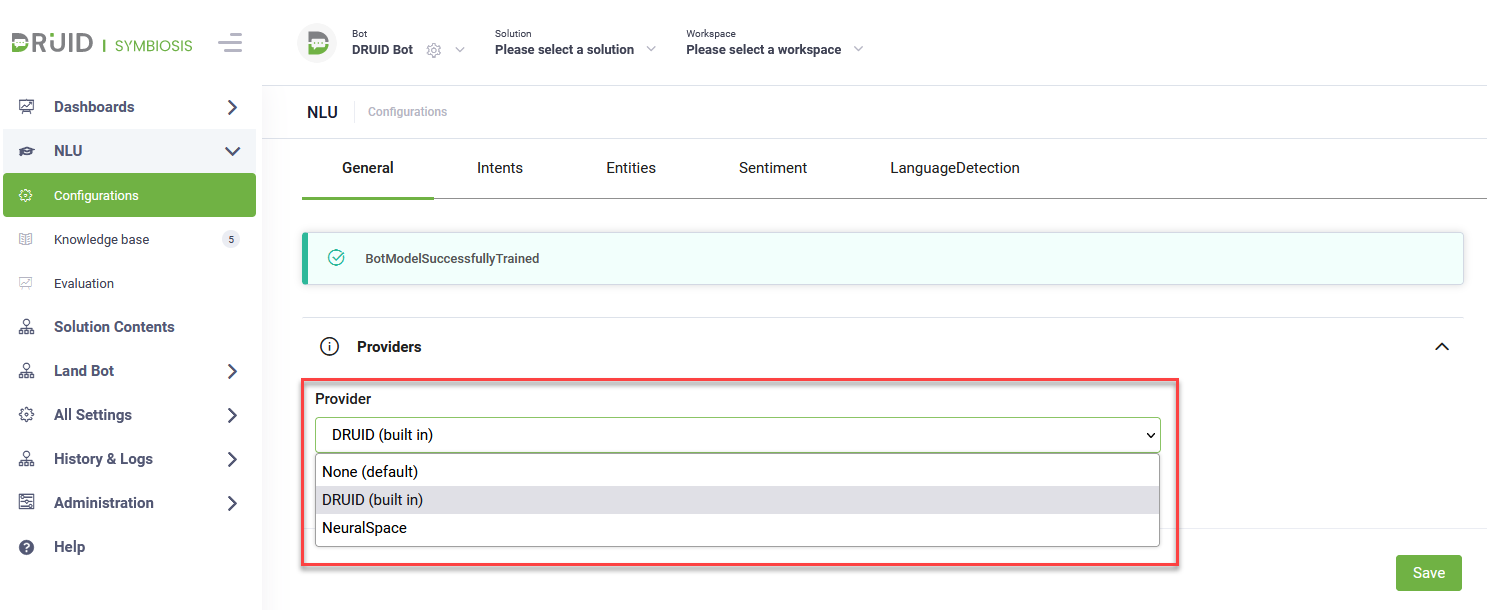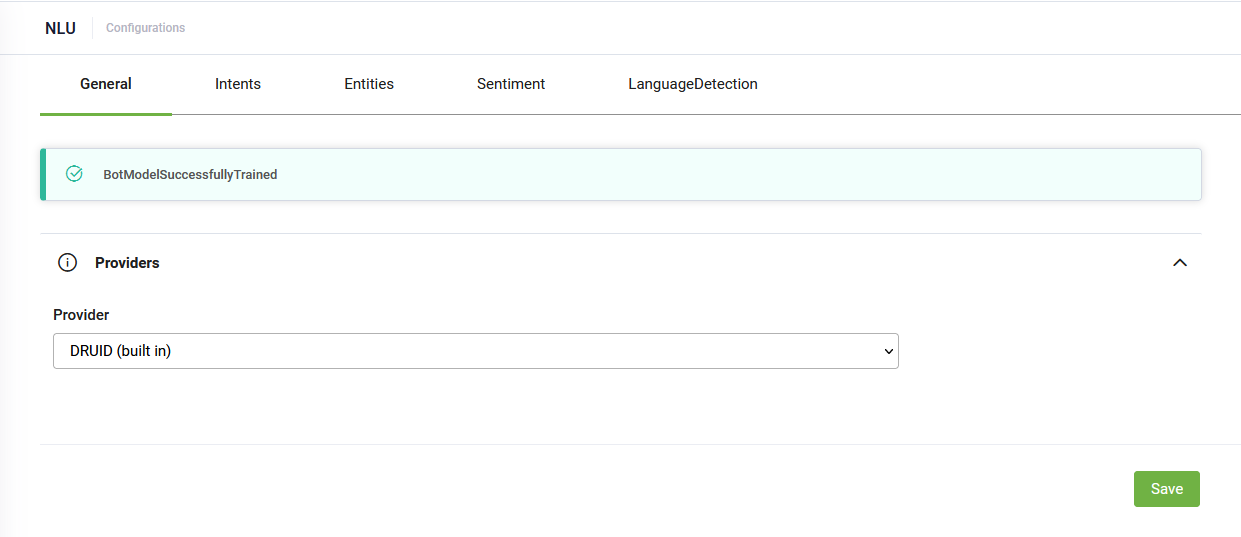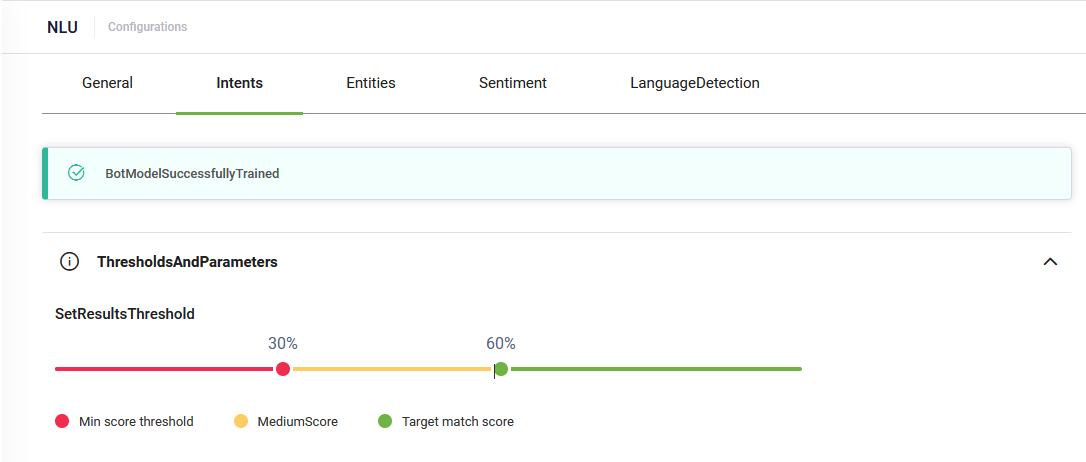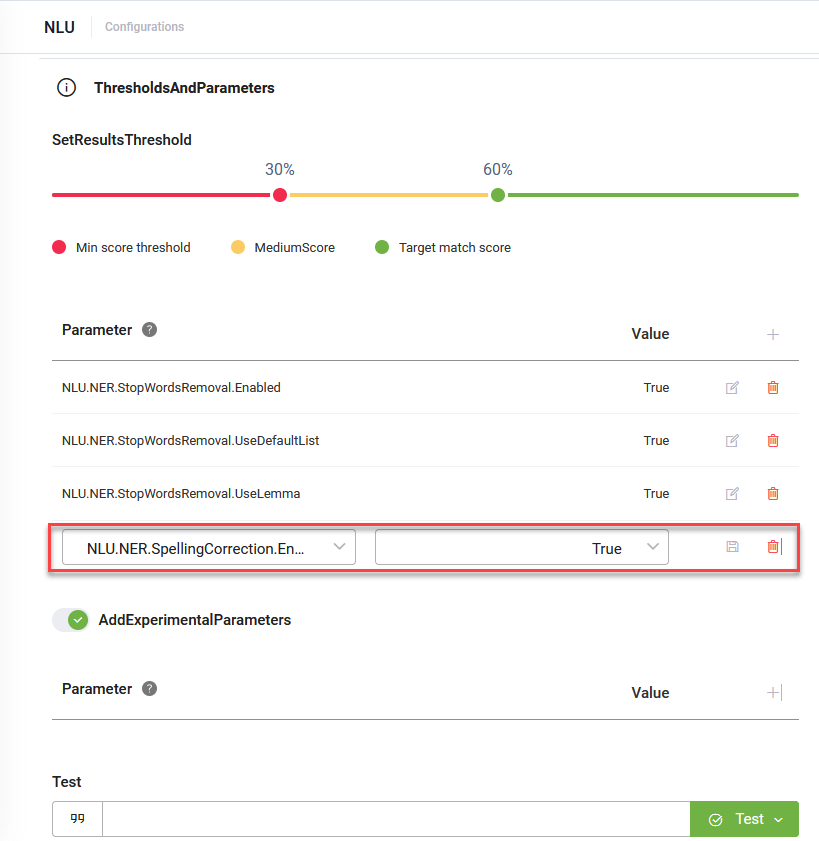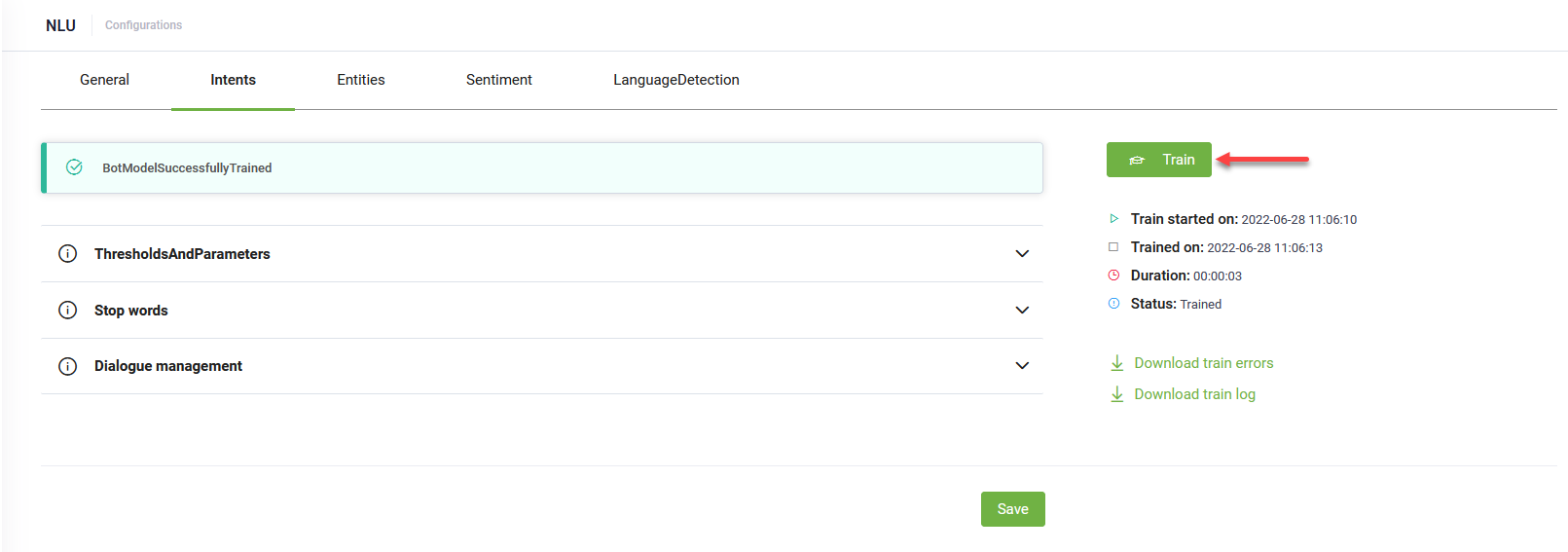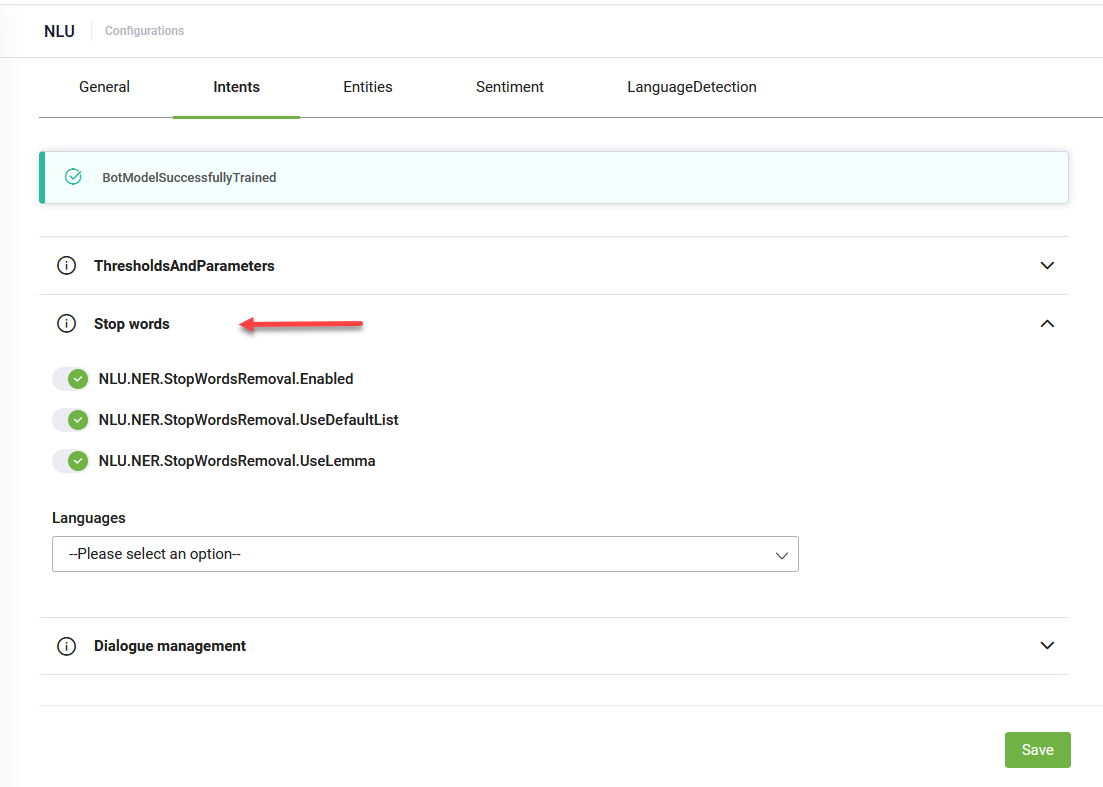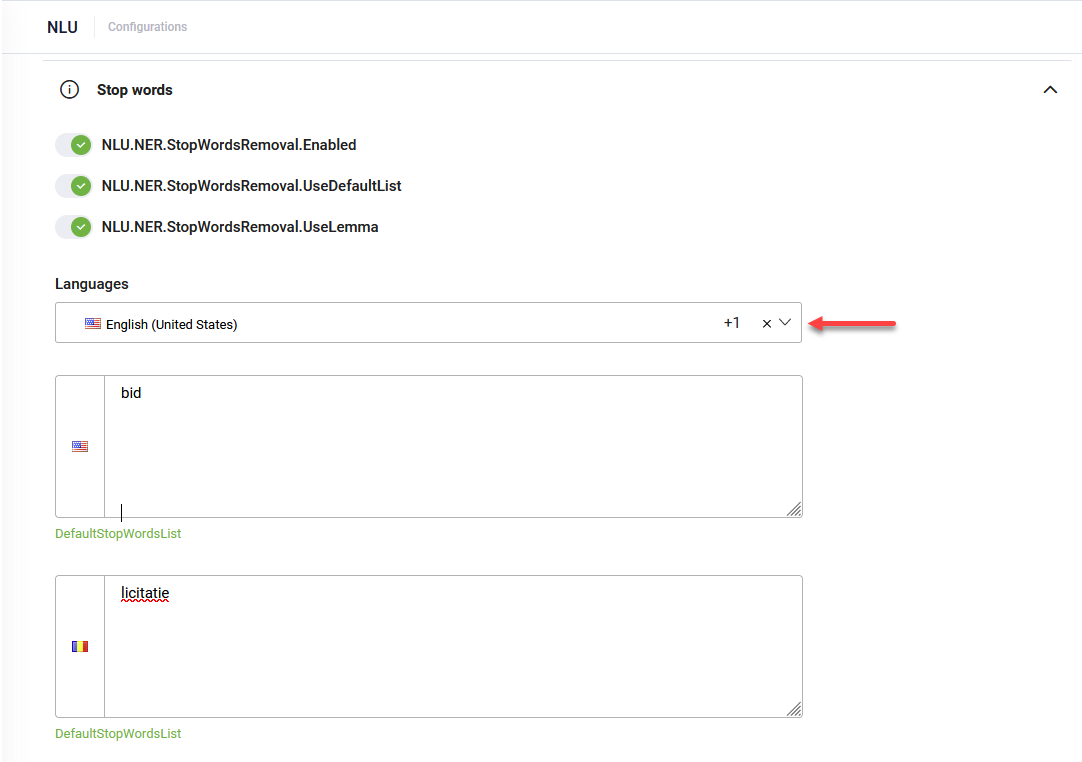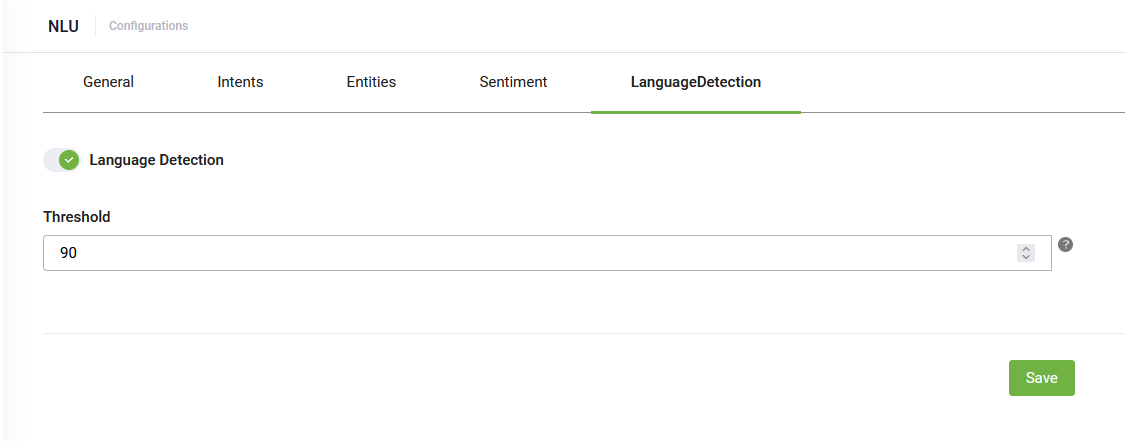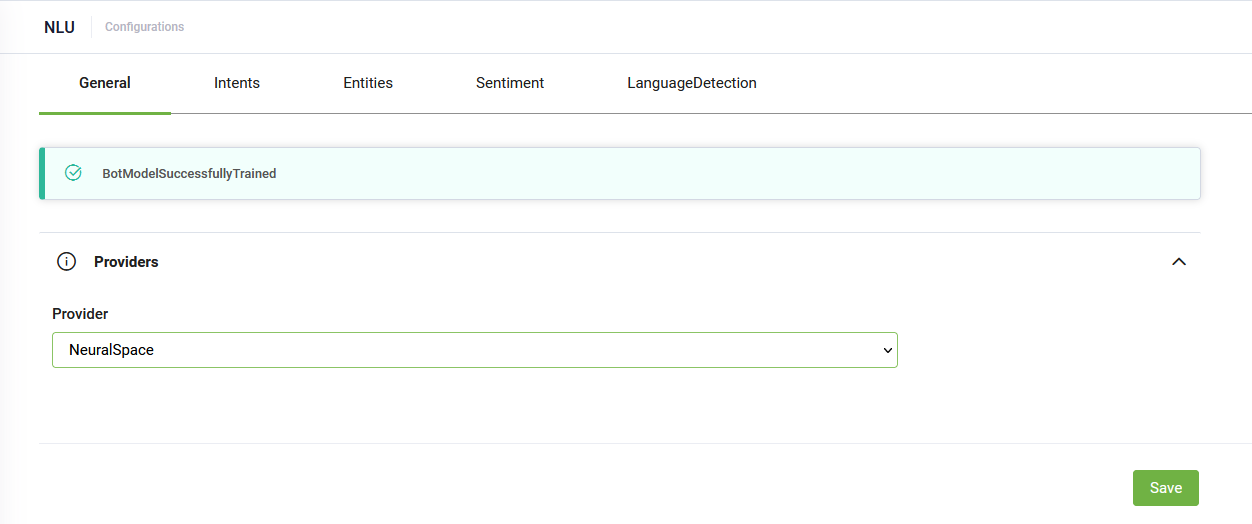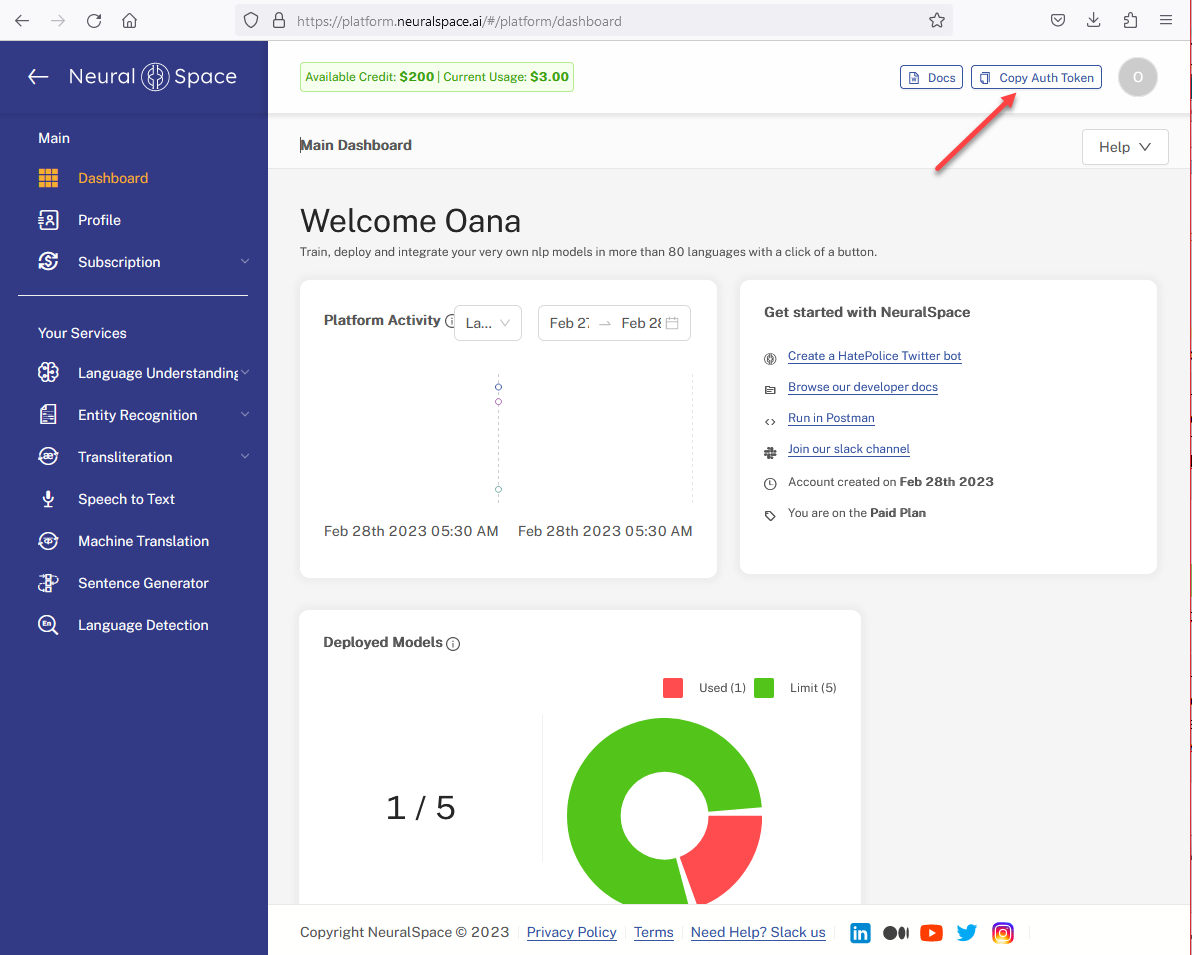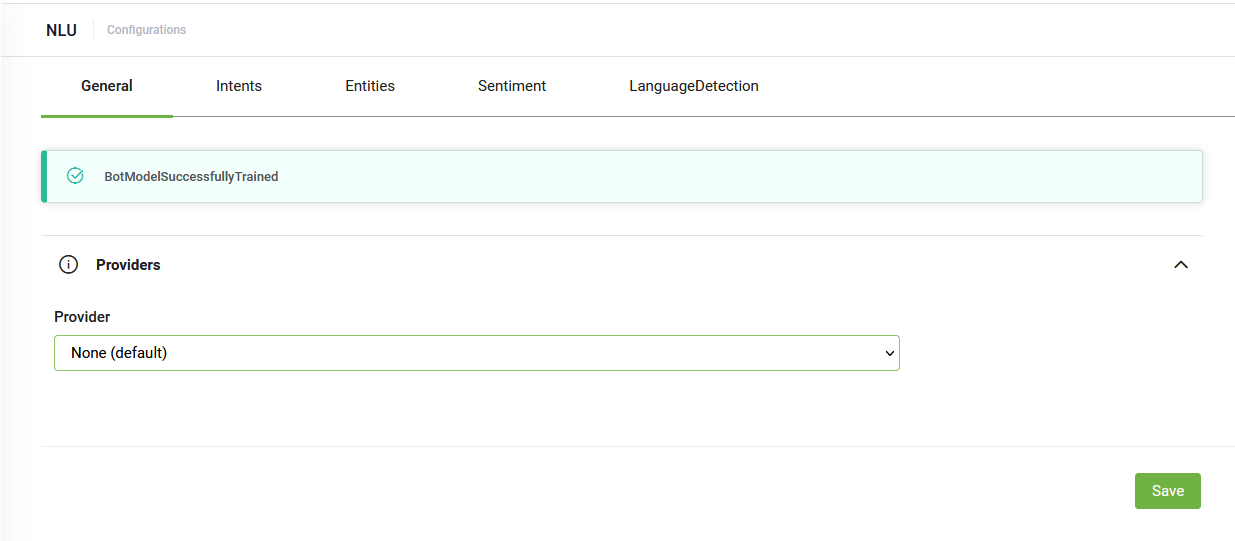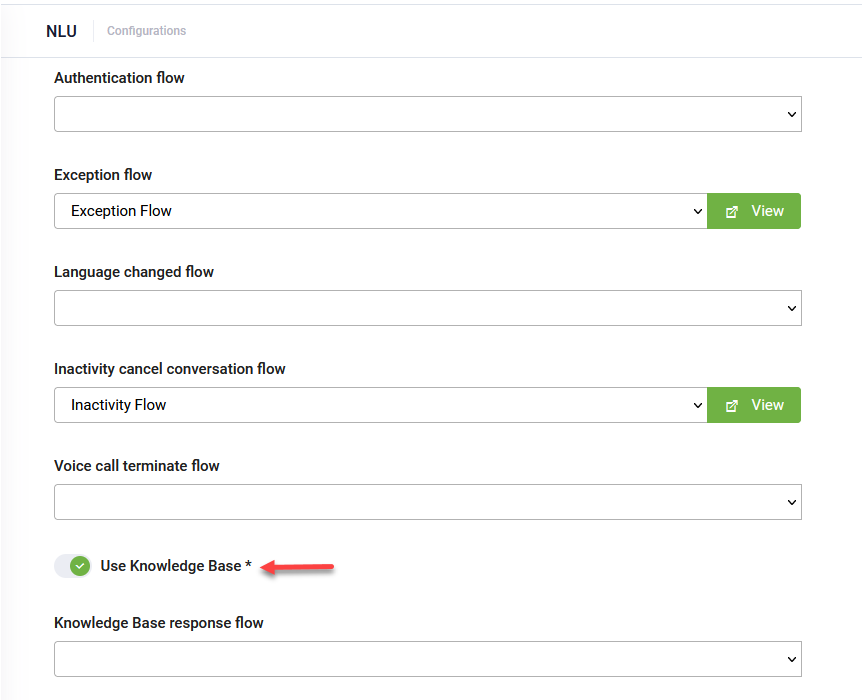Setting Up the Bot Conversational AI
To set up the bot Conversational AI, select the bot and from the NLU menu, click Configurations.The NLU Configuration page opens on the General tab.
Click the Providers section header. Based on the model you want to use, from the Provider drop-down, select the NLP provider:
- DRUID (built-in) - DRUID proprietary NLP is set by default. DRUID proprietary NLP technology focuses on interpreting the user's intent to provide information contextually based on their behavior and preferences.
- NeuralSpace - Use the NeuralSpace NLP.
- None - Use the Knowledge Base model. The chat bot will predict only within the Knowledge Base.
Click the Save button.
Using the DRUID NLP
DRUID NLP is comprised of all flows and QnAs. The default NLP interpreter is Druid (built-in), DRUID proprietary NLP.
To optimize the NLP interpreter, you need to set the bot NLP thresholds and parameters and optionally define additional stop words as described in teh follwoing sections.
Set Thresholds and NLP Parameters
Click on the Intents tab, then click the Thresholds and parameters section header. The section expands.
To set the thresholds for matching utterance, on the thresholds slider, slide the thresholds to the left / right.
The table below provides the description of the thresholds used for matching utterance.
| Entity threshold | Description |
|---|---|
|
Min match score |
The minimum threshold for matching utterance. A matching score below the minimum threshold does not trigger any flows. Recommended value: 30. |
|
Target match score |
The target threshold for matching utterance. A matching score above the target score threshold is a high match and the chatbot will provide the user with the relevant flow. A matching score between the MinScoreThreshold and the TargetMatchScore is a low match and the chatbot will provide the user with a flow which might not be the most relevant one. Recommended value: 60. |
To fine-tune the bot NLP training model, in the Parameters table, add special NLP parameters. For more information on these parameters, see NLP Special Parameters. The NLP parameters for Stop Words removal appear in the parameters table by default.
To add a parameter in the table click the Add icon (![]() ). A new line appears in the table. From the drop-downs, select the parameter, select the value and click the save icon.
). A new line appears in the table. From the drop-downs, select the parameter, select the value and click the save icon.
If you want to add NLP experimental parameters, tap on Add experimental parameters and in the table that appears, add the desired parameters. For more information on these parameters, see NLP Special Parameters.
Test the NLP model. Write the phrase you want to test (the intent), then click on Test and choose the corresponding language. The Conversational AI will return the matching flow (as it would do during a conversation), together with the matching score for that intent. It is a feedback tool for improving the NLP model.
Train the NLP model by clicking the Train button The training model includes ALL training phrases defined on ALL flows associated with the respective bot.
After training the NLP model, the following information is available in the Train area:
-
Train started on - the date and time when the NLP model training started. It has the following format: YYYY-MM-DD HH:MM:SS.
-
Trained on – the date and time when the model was last trained on. It has the following format: x days ago (YYYY-MM-DD HH:MM:SS).
-
Duration - how much time it took DRUID to train the bot NLP model. It has the following format: HH:MM:SS.
-
Status – the status of the model training (Trained / Untrained).
- Download train rrrors – Downloads (in your default Download folder) a JSON file which contains the errors occurred (if any) during the last NLP model training.
- Download train log - Downloads (in your default Download folder) a JSON file which contains comprehensive training phrases data: status per training phrases, score for each utterance, etc.
Add stop words
Words that are filtered out before the natural language data (text) is processed. While DRUID bots already have a predefined list of stop words per language (the most common words used in a language), you can optimize the training model by manually adding new stop words.
For example, if you have a bidding chatbot, you might want to exclude the word “bid” as the occurrence percentage for this word might be very high.
To add stop words, in the NLU Configurations page, Intents tab, click the Stop words section header. The section expands.
By default, the NLP parameters for stop words removed are set to true (the toggle buttons are on). To disable the stop words removal, toggle off these buttons and the specific NLP parameter(s) is automatically set to "false".
If your bot has multiple languages, you need to add stop word for each language. Select the language and enter the stop word in that language. After you add the stop words for all bot languages, click the Save button.
You can download the predefined list of stop words per language by clicking on the link below the stop words defined per language.
Set Entity Thresholds
Named Entity Recognition (NER) allows the chatbot to extract entities directly from the user intent. The thresholds for
In the NLU Configurations page, click the Entities tab and on the entity thresholds slider, slide the thresholds to the left / right.
The table below provides the description of the thresholds used for matching entities.
| Entity threshold | Description |
|---|---|
|
Entity min match score |
The minimum threshold for matching NER entities. The chatbot will match the appropriate indexed value based on the matching score in a similar way as for the MinScoreThreshold. Recommended value: 30. |
|
Entity target match score |
The target threshold for matching NER entities. The chatbot will match the appropriate indexed value based on the matching score in a similar way as for the TargetMatchScore. Recommended value: 60. |
Click the Save button to save the settings.
Define keywords for sentiment analysis
Sentiment analysis is done based on the provided positive and negative keywords. Sentiment analysis is not done automatically. Bot authors have to design their flow step(s) to capture user input and call the internal action GetWeightedSentiment, which will analyze the user input captured in Input mapping and return a score.
In the NLU Configurations page, click the Sentiment tab. Enter positive and negative words per bot language and click the Save button to save the settings.
Enable language detection
DRUID is capable of detecting any language change in the conversation prior triggering the Intent not found flow, covering the cases when the user types something in another language than the default language of the bot. It does not include the cases when the user changes the conversation language using the snippet's Language option.
To enable language detection, do the following steps:
- In the NLU Configurations page, click on the Intents tab, click the Dialogue management section and select the Language changed flow to be triggered when language change is detected in the conversation. Save the settings.
- Click on the Language Detection tab.
- Tap on Language Detection. The Threshold field becomes editable.
- In the Threshold field, enter a value (we recommend setting the threshold to 90). Whenever the threshold is reached, the selected Language Changed Flow will be triggered.
- Save the bot.
You can test user says to see the Predicted language and the Confidence (the score of the predicted language). This is particularly useful for debugging purposes to check why language detection was not done on user says or why the Language changed flow was not triggered.
Using the NeuralSpace NLP
Prerequisite
- You should have an activated account on the NeuralSpace Platform.
Set up the NeuralSpace NLP
In the NLU Configurations page, General tab, click the Providers section header and from the Provider drop-down, select NeuralSpace.
Click on the Intents tab, then click the Thresholds and Parameters section header. In the Parameters table, add the parameters described in the table below.
|
Parameter |
Description |
|---|---|
|
NeuralSpace.AuthorizationToken |
The NeuralSpace Platform authentication token. To get the authentication token, log into the NeuralSpace Platform and click the Copy Auth Token button at the top-right corner of the Dashboard. |
|
NeuralSpace.PlatformUrl |
The URL of the NeuralSpace Platform if hosted on premises. The URL should be accessible from the Internet. |
Click the Save button to save the settings.
Using the Knowledge Base model
By default, when the Knowledge Base is used on the bot , it will search through the Knowledge Base when the user input does not match with any of the existing flows.
To set the chatbot to predict only within the Knowledge Base, in the NLU Configurations page, General tab, click the Providers section header and from the Provider drop-down, select None.
Click the Save button, then click the Intents tab and the Dialogue management section header.
Scroll down and tap on Use Knowledge Base.
Click the Save button to save the settings.
